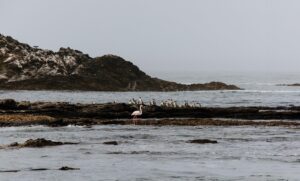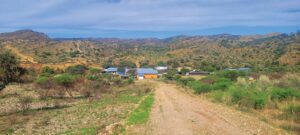
Namibia’s hidden heritage sites:
The Rhenish Mission Church and the naming of Keetmanshoop
From the Winter 2023 issue

Travelling to a new country is an exciting experience that requires thorough planning and research. It’s common to spend hours poring over travel guides, blogs, and websites to find the most interesting and unique places to visit. However, even when exploring our own country, we’re always on the lookout for new activities or hidden gems. Sometimes, these hidden treasures are right under our noses, but we don’t even realise it.
The National Heritage Council of Namibia, mandated by the government, is responsible for preserving and protecting significant places and objects in the country. While some of these sites, such as the Christuskirche, Alte Feste and Fort Namutoni buildings, and the Quiver Tree Forest near Keetmanshoop, are well-known tourist attractions, there are many other fascinating national monuments that often go unnoticed due to their unremarkable appearance, or obscure location.
In this series, we highlight some of the lesser-known or under-visited national monuments in Namibia that are often overlooked by tourists.
The Rhenish Mission Church in Keetmanshoop, Namibia, is a true architectural treasure. It was built in 1895 by the local Nama people under the guidance of the Reverend Tobias Fenchel, and it still stands today as the oldest building in Keetmanshoop.
The original church in Keetmanshoop was built in 1890, but it was washed away by the Aub River during a heavy flood. Reverend Tobias Fenchel was entrusted with the responsibility of overseeing the reconstruction of the church, and he modelled the new church after the Gambach Church in his home town in Germany. The new church was situated on higher ground than the previous one, and it was spacious enough to accommodate up to 1,000 people.
Johann Keetman, an elder of the Rhenish Mission in Germany, generously donated 1,000 gold marks for the construction of the church. As a gesture of gratitude, the locals renamed their village, which was formerly called Zwartmodder, to Keetmanshoop. This new name was meant to honour Johann Keetman for his generous donation, as he had invested not only money but also hope in the project.
The Rhenish Mission Society played an important role in the development of Keetmanshoop, where the Nama Kaptein Tseib and his followers had settled in late 1866. The missionary Dr. Carl Hugo Hahn had requested the Society to establish a mission station here, and this marked the beginning of a long and fruitful relationship between the Society and the people of Keetmanshoop.
Today, the Rhenish Mission Church no longer serves as a place of worship, but rather houses the Keetmanshoop Museum. The building’s square stone tower measures some 30 metres in height and elegantly narrows to an octagonally peaked tip, making it a true architectural marvel. The solid stone walls, bowed wooden ceiling, and pulpit also add to the building’s aesthetic appeal.
In 1930, the European community in Keetmanshoop decided to build their own church, leaving the Rhenish Mission Church to be used exclusively by the African members of the community until 1961. From then on, the church fell into disuse and started to decay. However, in 1978, the building was repurposed as a museum.
In 1985, after the Keetmanshoop mayor, His Worship Kurt Johannesson, had the church fully restored at considerable expense, the Rhenish Mission Society let it to the Keetmanshoop Municipality. Even in the hottest summer, the church’s interior remains cool, making it an ideal location for cultural events and other activities.
The Rhenish Mission Church in Keetmanshoop is situated on Sam Nujoma Avenue, and the district of Keetmanshoop is located in the Karas Region of Namibia. This building is not only a cultural and historical landmark but also a testament to the ingenuity and craftsmanship of the Nama people who constructed it over a century ago. TNN
Visit the Venture Media offices to get your own copy of the Namibian National Monuments map to ensure none of these interesting sites will be missed.







